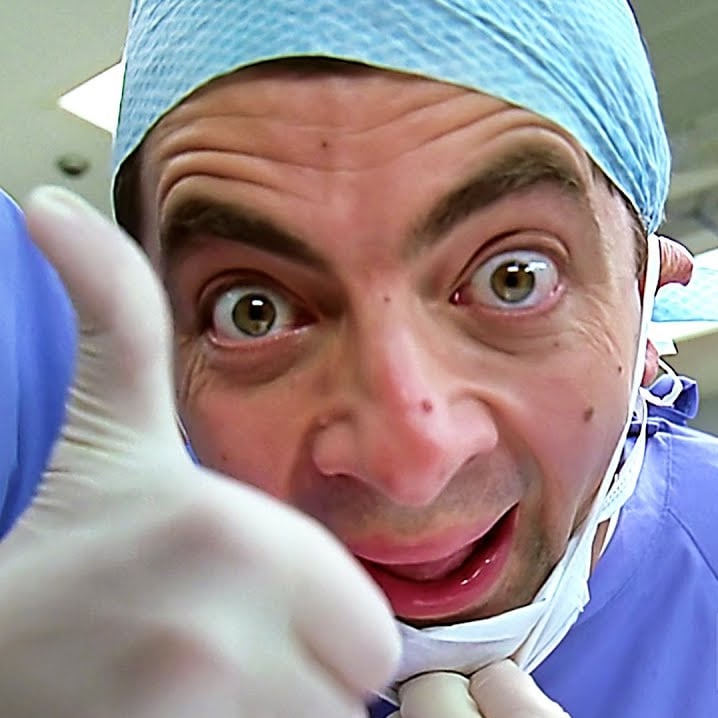Automation and job replacement is a good thing. The reason it feels bad is because we’ve tied the ability to satisfy our basic needs to employment. In an economic model that actually isn’t a dystopian hellscape, robots replacing jobs is something to celebrate.
And to switch our economic model to one in which a person can thrive without pissing the vast majority of our lives away on the grind; we just need to pull ourselves up by our bootstraps!

This is so important.
An aspect of post scarcity is that people shouldn’t have to work. AGI might allow that; LLM is starting to fill some niches.
The problem is how it’s being done. Rather than benefiting society as a whole, it’s enriching a few. In an ideal world, people whose jobs are replaced should get a stipend. We should all be eagerly awaiting that time when our jobs are replaced and we get a paycheck - maybe a little reduced - but now we’re free to pursue our interests. If that means doing your old job, only now it’s bespoke, artisan work, great.
The other missing factors are free energy and limitless resources; but we’re making progress on energy, but resources are an issue with no solution on the horizon. Plus, we’re killing the planet by just existing, so there’s that.
We have a lot of problems to solve but AI is part of the solution, except that it’s being done wrong. And expensively.
 Credit to the original artist.
Credit to the original artist.Seems the translated variant misses a big point of the original artist too, notice how the gun slowly comes into view? It’s trying to make a point that the replacement isn’t quite organic, but rather forced on us. Probably would have been better to just translate the text in place and include the rightful credit.
Ironic. The translator and artist were the first ones to be killed, and now we got this bastardized AI “translation” that’s actually an entirely different image, but worse.
This is why so many were confused about “personal,” I believe it’s a borrowed term in Brazil that popularly means personal trainer.
Not personnel, not HR, not personal assistant, nor an AI hallucination, even as some confidently claimed them, all because the original work was discarded for a shitty alternative, much like workers themselves.
This… Almost looks like the op of this post used AI to translate and change the art style of this comic.
Any personals here?
Everyone thinks their own line of work is safe because everyone knows the nuances of their own job. But the thing that gets you is that the easier a job gets the fewer people are needed and the more replaceable they are. You might not be able to make a robot cashier, but with the scan and go mobile app you only need an employee to wave a scanner (to check that some random items in your cart are included in the barcode on your receipt) and the time per customer to do that is fast enough that you only need one person, and since anyone can wave a scanner you don’t have much leverage to negotiate a raise.
This is the lump of labor fallacy. The error you are making is assuming that there is a fixed quantity of work that needs to be performed. When you multiply the productivity of every practitioner of a trade, they can lower their prices. This enables more people to afford those services. There’s a reason people don’t own just 2 or 3 sets of clothes anymore.
When you multiply the productivity of every practitioner of a trade, they can lower their prices.
I’m sorry, but that’s some hilarious Ayn Rand thinking. Prices didn’t go down in grocery stores that added self-checkout, they just made more profit. Companies these days are perfectly comfortable keeping the price the same (or raising them) and just cutting their overhead.
Don’t get me wrong, if there are things they could get more profit by selling more, then they likely would. But I think those items are few and far between. Everything else they just make more money with less workers.
Are you sure self checkout is actually a labor-saving device? Does it actually save costs on net, once you factor in increased theft and shrinkage? Remember, just because companies adopt something, doesn’t mean it’s actually rational to do so. Executives are prone to fads and groupthink like anyone else. And moreover, this is a bit of an inappropriate example for two reasons. First, the demand for groceries is relatively fixed. Even if the price of groceries was cut in half, you probably wouldn’t suddenly double the calories you consume. Second, self checkout is a small marginal cost to the cost of goods in grocery and retail stores. Self checkout doesn’t improve the actual production process of the goods being sold in a store.
But I’m sorry, yes, you can cherry pick a few examples. But the general rule is and always has been that increased automation leads to lower prices. This is the entire story of the Industrial Revolution. People used to own only two or three outfits, as that’s all they could afford. A “walk in closet” was an absurdity 200 years ago. The clothing industry industrialized, and the cost of clothing was driven to the floor, completely contradicting what your model predicts. The 19th century textile barons didn’t mechanize production and then simply pocket the savings.
Hell, the only reason you can afford any kind of consumer electronics is because of automation. The computer, phone, or tablet you’re using now? It would cost 100x as much without automation. This is why niche electronics like specialized lab instruments cost so much money. If you’re only building a few of something for a tiny market, you can’t invest in large scale automation to bring the cost down.
Look at how quickly and dramatically the price of LiDAR has declined. LiDAR was once the purview of specialized engineering and scientific instruments. But because of driver assistance technologies, the demand for LiDAR has exploded. This allowed LiDAR manufacturers to invest in more automated production chains. They didn’t automate and keep charging the same price, as you would assume.
For an example of this in a white collar field, consider something like architecture. How many people actually hire an architect to custom design them a home? Very few. Most people buy mass produced tract homes. Tract homes benefit from a lot of automation and economies of scale, so they’re cheaper than one-off custom-built homes designed by architects. Yet if an architect could rely on specialized AI systems to vastly lower the number of hours required to design a set of home plans, they could charge less. Many more people would then be able to afford the services of an architect.
Yes, you can cherry pick a few examples of industries that have little competition or fixed demand, where they automate without substantially lowering prices. But even those big box stores with their automated checkouts are examples of automation lowering prices. There’s a reason the giant chains can charge less for products than small mom-and-pop shops. A giant grocery chain is big enough to invest in a lot of automation and other economies of scale that a small co-op can’t afford.
Why is lemmy filling up with AI posts? Its worse that this is on c/comicstrips
“Personal?” Personal what?
We will never know, because this comic was produced by AI.
The link you posted supports that it’s AI
The original comic wasn’t produced by AI, though.
Yeah, and this one was.
Okay, but the word “personal” still presumably had some meaning in the original Portugese. An AI did not come up with that word. Google Translate isn’t sure what it could translate to in English apart from “personal”, but presumably, there’s some meaning there that the artist intended.
You’re one of several people saying this is from AI. I’m more familiar with the AI giveaways in text or fake photos, but not so much with comics. What makes this comic look so obviously AI generated to you?
deleted by creator
What’s a personal?
Came here to say this… Personal?
This strip was made by AI, wasn’t it? WASN’T IT??!?!?!
It might be. The doctor ear has different colors. And each robot has a slight difference in shading and shape. An human artist will just simply copy paste all the robots.
brown teeth lady
I disagreed until you pointed that out.
I think those are lips.
deleted by creator
Correct. But it has made Translators more productive so we need fewer of them. But the productivity gains will create other jobs and so on. So it’s not as clear cut as people think. What will likely happen is that some jobs will vanish (anyone here remember elevator operators?) while some jobs will change and in other cases new professions will be created.
I have done professional translation, as a side gig. The usual workflow involves a first run through machine translation (Deepl is my favorite), then opening the machine translation in a translation program (I use CafeTran), which is used to make the second pass, by the human translator. This program doesn’t translate (they can use one of the main translation engines) but provides a bunch of tools to make the translation refining process easier.
Pure machine translation is a hack. AI can’t grasp nuances, contexts, etc… You will often see many words that may have several meanings, used incorrectly, for example.
deleted by creator
You think maybe your experience isn’t the only workflow that exists for translation and different audiences might require different levels of scrutiny and authenticity? No, you think the other person is completely full of shit instead and just decided to be an ass about it. Titles don’t mean shit by the way, I’ve handed so many Sr. Architect titles to admins even though they can’t see the forest from the trees or understand the business side of anything just to shut them up while I found someone to replace their ego. Flippantly throwing around a title lets everyone else that knows what’s actually going on that you can’t stand on your own merit, that’s all, get over yourself and stop being flippant towards people sharing their experiences just because they were different than your own, it’s childish.
deleted by creator
Did you miss the “usual” part? I know there are translations that need to be done strictly by humans, but they are definitely not the majority. In my country there is a group of translators that are “official” translators, people with an actual masters in translation, and who must pass a very hard official exam. They translate things like official documents, legal matters, etc, but they do a very small percentage of translations.
As a barkeeper, I still feel very safe.
Personal is a career?
The original meme this was copied from is Brazilian:

The image looks like AI…
Makes sense, the artist panel has a robot after all.









